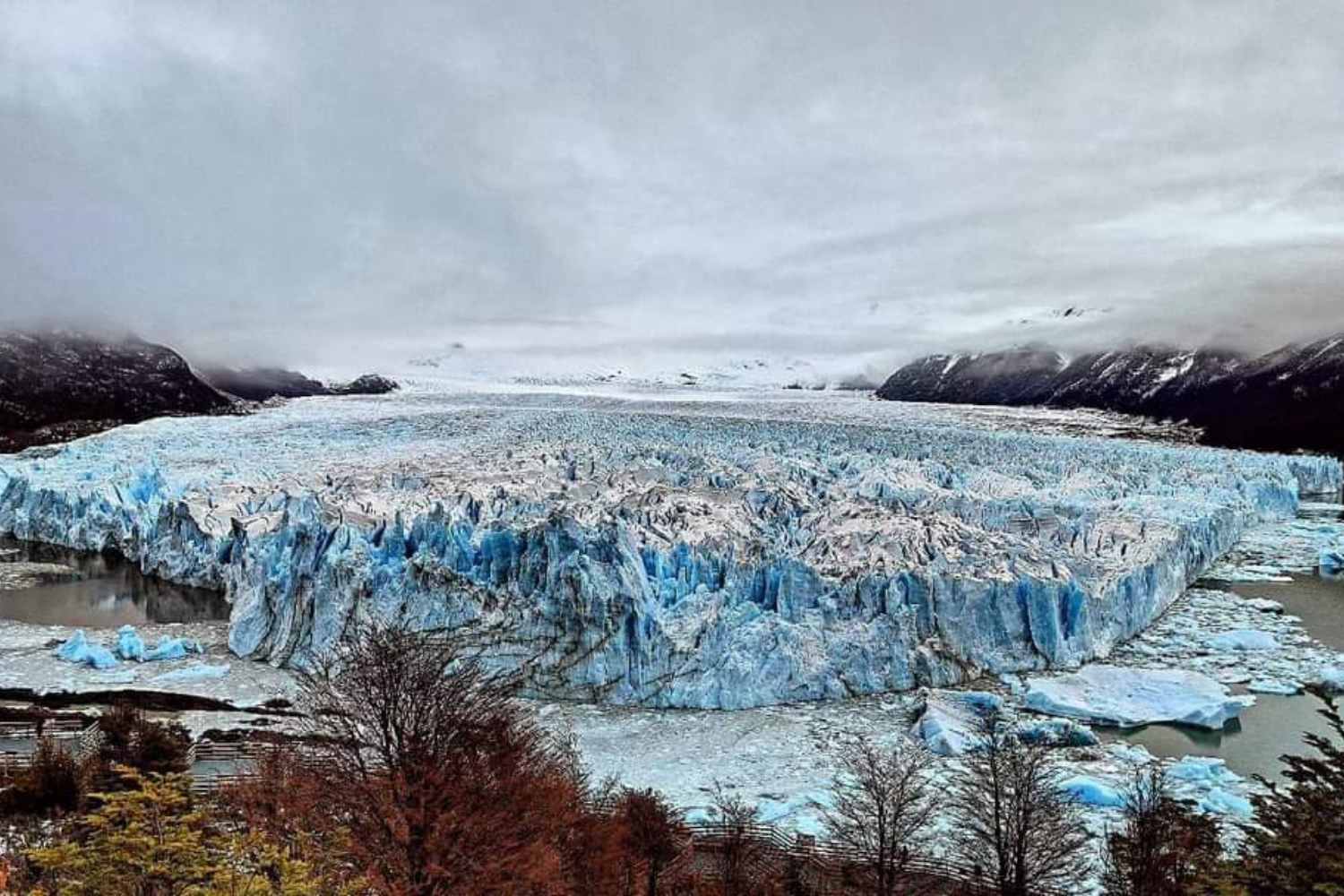The Perito Moreno Glacier, long considered stable, is now retreating rapidly. New research shows its natural anchors are failing, making it vulnerable to climate change.

@Daniel Testoni (X)
For decades it was seen as a rare anomaly—a glacier that managed to stay “stable” while its Patagonian neighbors shrank dramatically. But now, the Perito Moreno—one of the world’s most famous glaciers and a UNESCO World Heritage site since 1981—is undergoing its most significant retreat in a century.
A study published in Communications Earth & Environment (Nature) has, for the first time, mapped the hidden bedrock beneath the glacier. The results reveal a fragile balance finally tipping out of place. Using helicopter-mounted radar, sonar, and satellite data collected between 2022 and 2023, researchers tracked an alarming acceleration in frontal collapse. From 2000 to 2019, the glacier’s surface near the front was thinning at about 1.1 feet (0.34 meters) per year. Between 2019 and 2024, that rate surged to 18 feet (5.5 meters) annually, with some of the deepest zones losing more than 21 feet (6.5 meters) each year.
The role of the hidden landscape
Perito Moreno covers 100 square miles (259 km²) within the Southern Patagonian Icefield and ends in the icy waters of Lake Argentino, spilling into its Brazo Rico and Canal de los Témpanos arms. For years, a submerged ridge and a hidden moraine acted as natural anchors, slowing its retreat and reducing underwater melting. But that protection began to fail in 2020. Along the northwest margin of Canal de los Témpanos, the glacier front has pulled back by half a mile (800 meters) in just four years.
The study’s authors note that this gradual detachment from the subglacial ridge removes the opposing stress that once stabilized the glacier, allowing faster basal sliding and speeding up the flow of ice. Measurements show that between 2021 and 2023, frontal ice velocities hit 2,950 feet (900 meters) per year, increasing by more than 300 feet (100 meters) annually compared to just a few years earlier.
A fragile balance, an uncertain future
The team developed models projecting phases of retreat tied to flotation. The first step, already underway, is complete detachment from the ridge. Next could come an accelerated pullback into a zone of thicker ice and narrower geometry—a brief reprieve of stability. Beyond that, however, retreat into a retrograde bed could trigger a runaway cycle of self-sustaining loss, much like what has already been observed in other Patagonian glaciers.
If today’s thinning rates persist, much of the glacier’s first three miles (five kilometers) upstream could start floating, exposing far more ice to lake water and greatly increasing underwater melt.
Climate, oscillations, and local quirks
Average warming in the region, measured from 1990 to 2020, was +0.36°F (+0.2°C) per decade, with stronger seasonal peaks in spring and summer. Phenomena like El Niño and the positive phase of the Southern Annular Mode amplify winds and temperatures, cutting into the glacier’s surface mass balance. Even winters with above-average snowfall no longer compensate, as increasingly hot summers erase those gains within months.
The researchers stress that projections remain uncertain, partly because there is so little direct data on precipitation at high elevations in Patagonia—ironically, one of the wettest places on Earth. Still, the evidence is clear: Perito Moreno is no longer “immune” to climate change, and its delayed response compared to less-protected glaciers is finally catching up.
An icon at risk
Nearly 800,000 visitors travel each year to witness Perito Moreno’s dramatic icefalls crashing into the lake. Its importance for El Calafate’s tourism economy, and its symbolic weight as part of the world’s natural heritage, make its fate even more significant.
As lead author Moritz Koch put it, “we now observe a very delayed response to climate change, as it is slowly but inexorably detaching from this physical anchor point.”
What happens next will serve as a test case—not just for Patagonia, but for Antarctic and Alpine glaciers facing similar dynamics. And time, like the ice itself, is thinning fast.
